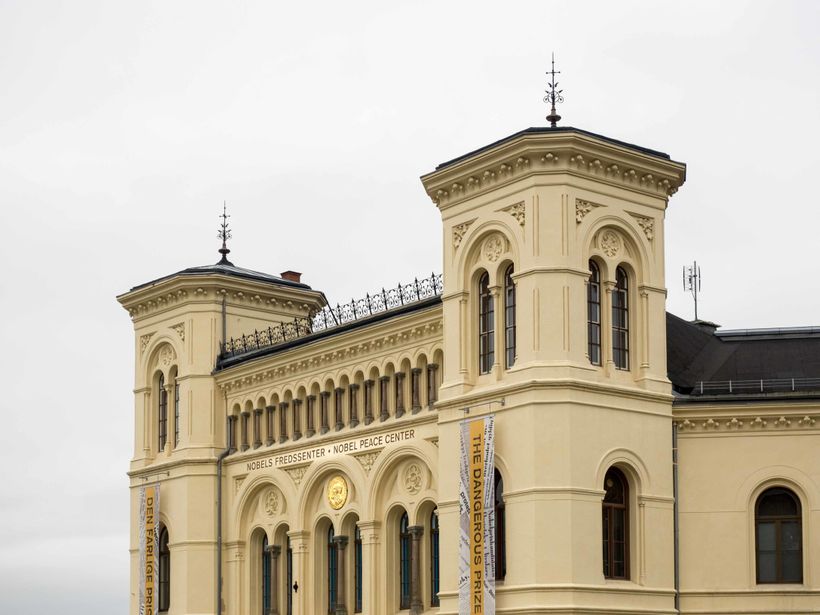
18 Oct PRIZE AND PARADOX: What is Nobel’s Peace Prize Really Worth?
No other prize is regarded with more prestige than the Nobel Peace Prize. An aura of admiration surrounds it. As 1984 winner Desmond Tutu putt, “No sooner I had got the Nobel Peace Prize than I became an instant oracle. Virtually everything I had said before was now received with something like awe.”
It seems a given then that the winners are actually peace champions. The Norwegian Nobel Committee has often done a good job of executing Alfred Nobel’s last will. However, it has also taken its own path toward peace.
Earlier this month, the committee announced that the 2016 Nobel Peace Prize goes to Colombian President Juan Manuel Santos for his efforts to bring the country’s more than fifty year-long civil war between the government and the Revolutionary Armed Forces of Colombia (FARC) to an end.
The announcement was followed by praise but also by surprise and indignation because the peace agreement Santos was rewarded for was rejected by the Colombian people in a referendum less than a week before the committee’s announcement. The opposition to the peace agreement points out that President Santos is a representative of an oligarchy that has created a political system in order to enrich itself to the detriment of the Colombian people for decades. This political system and social differences are in part why guerillas like the FARC formed in the first place. As defense minister under President Álvaro Uribe, Santos ordered the airstrike on Ecuador in an attempt to destroy the same rebel group with which he is now trying to make peace. Under Santos’ leadership, members of the military lured poor and mentally impaired teenagers to remote parts of the country with offers of work, killed them, and, in an effort to inflate body counts, presented them to the authorities as guerilla soldiers killed in battle.
Although poverty has been reduced with Santos as president, 40 percent of the country’s rural population still lives below UNDP’s poverty line. The number of displaced persons, or internal refugees, has increased to 6.3 million.
The people of Colombia voted against an agreement they felt didn’t deal with the country’s enormous social differences and the FARC’s part in drugs and human trafficking, issues that are essential to sustain peace. Some who voted against it believe that Santos doesn’t care about his constituents, only his international reputation. They interpret this year’s peace prize as a slap in the face to the Colombian people.
Was the committee ignorant of these aspects of Colombia’s history, or did it not care? Or perhaps it wished to honor and encourage a man who has turned against the totalitarian and brutal way of rule of his predecessors and who is trying to work with the enemy instead of against it. Santos has taken a new approach to peace negotiations by including representatives from indigenous peoples, women, and the LGBTI community in the process, resulting in an agreement that also reflect their views. The Colombian treaty is one of the first to prohibit sexual abuse and violence and to make such violence a deal-breaker for peace.
However, it’s not unreasonable to ask if the reward is premature. There are still many obstacles in the road toward lasting peace in Colombia. The 2016 Nobel Peace Prize might turn out to be a disappointment just as the 2009 award to President Barack Obama was. The committee had high hopes that Obama would go the opposite way of former President George W. Bush regarding foreign policy and war.
Even more controversial in Nobel peace prize history is the 1973 award to Henry Kissinger, U.S. Secretary of State, and Le Duc Tho, the leader of North Vietnam. Not only was Le Duc Tho the representative of a totalitarian and mass-murdering dictatorship, but the United States was carpet-bombing Cambodia and Laos as part of the Vietnam War the same year both leaders were awarded the prize.
Thorbjørn Jagland, chairman of the Norwegian Nobel Committee, said that since there is so little actual peace in the world, “we have to award those who are trying.”
If the committee this year really wished to reward the parties’ efforts to reach common grounds why was the FARC leader, Rodrigo Londoño Echeverri—known as Timochenko—excluded? Perhaps the 2016 prize is not only recognizing Santos, but also a way of applauding the Norwegian government’s efforts in the negotiations.
The committee should skip awarding the prize if it lacks suitable candidates. After all, there is no requirement that the prize be awarded every year, only every fifth year.
Instead, the Nobel committee has developed its own definition of peace and what qualifies as the work of a peace champion. No matter how noble the cause of the Guatemalan indigenous peoples, the 1992 prize to guerilla fighter Rigoberta Menchú was a human-rights award. Muhammad Yunus, the “Banker to the Poor” and 2006 winner, might have been worthy of an economic award, but not Nobel’s Peace Prize. Al Gore, the 2007 laureate, is an environmental activist.
While the Norwegian Nobel Committee is busy rewarding people who are not peace champions according to Alfred Nobel’s definition—some of them are self-serving leaders and warmongers—it has ignored the real peace champions. The committee itself has admitted that ignoring India’s Mahatma Gandhi was a mistake. Another worthy candidate was Burmese diplomat and UN Secretary-General U Thant, who averted what could have become nuclear war in the 1962 Cuban Missile Crisis.
Before people and organizations are put on pedestals, especially one as lofty as the Nobel, it is imperative to examine what makes up those pedestals. Only then will we know the true worth of a prize.

